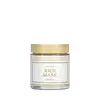Bioderma Hydrabio Cream Versus I'm from Rice Mask
What's inside
What's inside
 Key Ingredients
Key Ingredients

 Benefits
Benefits

 Concerns
Concerns

 Ingredients Side-by-side
Ingredients Side-by-side

Water
Skin ConditioningGlycerin
HumectantIsododecane
EmollientCyclopentasiloxane
EmollientPropylene Glycol Dicaprylate/Dicaprate
EmollientDimethicone
EmollientPropanediol
SolventXylitol
HumectantCetyl Palmitate
EmollientHydrogenated Polydecene
EmollientNiacinamide
SmoothingTridecyl Trimellitate
EmollientArachidyl Alcohol
EmollientPolymethylsilsesquioxane
Glyceryl Dibehenate
EmollientBehenyl Alcohol
EmollientHdi/Trimethylol Hexyllactone Crosspolymer
Tribehenin
EmollientDimethicone/Vinyl Dimethicone Crosspolymer
Skin ConditioningPentylene Glycol
Skin ConditioningTocopheryl Acetate
AntioxidantArachidyl Glucoside
EmulsifyingAcrylates/C10-30 Alkyl Acrylate Crosspolymer
Emulsion StabilisingHydroxyethyl Acrylate/Sodium Acryloyldimethyl Taurate Copolymer
Emulsion StabilisingGlyceryl Behenate
EmollientDisodium EDTA
Squalane
EmollientSalicylic Acid
MaskingSodium Hydroxide
BufferingMannitol
HumectantSodium Hyaluronate
HumectantHexyldecanol
EmollientTocopherol
AntioxidantPolysorbate 60
EmulsifyingRhamnose
HumectantHelianthus Annuus Seed Oil
EmollientPyrus Malus Seed Extract
Skin ConditioningBrassica Campestris Sterols
EmollientParfum
MaskingWater, Glycerin, Isododecane, Cyclopentasiloxane, Propylene Glycol Dicaprylate/Dicaprate, Dimethicone, Propanediol, Xylitol, Cetyl Palmitate, Hydrogenated Polydecene, Niacinamide, Tridecyl Trimellitate, Arachidyl Alcohol, Polymethylsilsesquioxane, Glyceryl Dibehenate, Behenyl Alcohol, Hdi/Trimethylol Hexyllactone Crosspolymer, Tribehenin, Dimethicone/Vinyl Dimethicone Crosspolymer, Pentylene Glycol, Tocopheryl Acetate, Arachidyl Glucoside, Acrylates/C10-30 Alkyl Acrylate Crosspolymer, Hydroxyethyl Acrylate/Sodium Acryloyldimethyl Taurate Copolymer, Glyceryl Behenate, Disodium EDTA, Squalane, Salicylic Acid, Sodium Hydroxide, Mannitol, Sodium Hyaluronate, Hexyldecanol, Tocopherol, Polysorbate 60, Rhamnose, Helianthus Annuus Seed Oil, Pyrus Malus Seed Extract, Brassica Campestris Sterols, Parfum
Water
Skin ConditioningGlycerin
HumectantDipropylene Glycol
HumectantOryza Sativa Powder
Cetearyl Ethylhexanoate
EmollientOryza Sativa Hull Powder
Abrasive1,2-Hexanediol
Skin ConditioningBeeswax
Emulsion StabilisingSynthetic Wax
AbrasiveStearic Acid
CleansingBetaine
HumectantCetyl Alcohol
EmollientButyrospermum Parkii Butter
Skin ConditioningHydrogenated Poly(C6-14 Olefin)
EmollientCentella Asiatica Extract
CleansingFicus Carica Fruit Extract
HumectantOryza Sativa Bran Extract
Skin ConditioningOryza Sativa Extract
AbsorbentLaminaria Japonica Extract
Skin ProtectingEclipta Prostrata Leaf Extract
Skin ConditioningUlmus Davidiana Root Extract
Skin ConditioningAmaranthus Caudatus Seed Extract
Skin ConditioningHydrogenated Lecithin
EmulsifyingPalmitic Acid
EmollientSorbitan Stearate
EmulsifyingGlyceryl Stearate
EmollientSodium Polyacrylate
AbsorbentDimethicone
EmollientCyclopentasiloxane
EmollientAcetophenone
MaskingEthylhexylglycerin
Skin ConditioningWater, Glycerin, Dipropylene Glycol, Oryza Sativa Powder, Cetearyl Ethylhexanoate, Oryza Sativa Hull Powder, 1,2-Hexanediol, Beeswax, Synthetic Wax, Stearic Acid, Betaine, Cetyl Alcohol, Butyrospermum Parkii Butter, Hydrogenated Poly(C6-14 Olefin), Centella Asiatica Extract, Ficus Carica Fruit Extract, Oryza Sativa Bran Extract, Oryza Sativa Extract, Laminaria Japonica Extract, Eclipta Prostrata Leaf Extract, Ulmus Davidiana Root Extract, Amaranthus Caudatus Seed Extract, Hydrogenated Lecithin, Palmitic Acid, Sorbitan Stearate, Glyceryl Stearate, Sodium Polyacrylate, Dimethicone, Cyclopentasiloxane, Acetophenone, Ethylhexylglycerin
 Reviews
Reviews

Ingredients Explained
These ingredients are found in both products.
Ingredients higher up in an ingredient list are typically present in a larger amount.
Cyclopentasiloxane, or D5, is a silicone used to improve texture of products and trap moisture.
D5 is considered lightweight and volatile. Volatile means it evaporates quickly after application. Once evaporated, D5 leaves a thin barrier that helps keep skin hydrated.
It is also an emollient. Emollients help soften the skin and prevent water loss. Silicones create a silky texture in products. D5 helps other ingredients become more spreadable.
Studies show D5 is safe to use in skincare products. We recommend speaking with a skincare professional if you have concerns.
Learn more about CyclopentasiloxaneDimethicone is a type of synthetic silicone created from natural materials such as quartz.
What it does:
Dimethicone comes in different viscosities:
Depending on the viscosity, dimethicone has different properties.
Ingredients lists don't always show which type is used, so we recommend reaching out to the brand if you have questions about the viscosity.
This ingredient is unlikely to cause irritation because it does not get absorbed into skin. However, people with silicone allergies should be careful about using this ingredient.
Note: Dimethicone may contribute to pilling. This is because it is not oil or water soluble, so pilling may occur when layered with products. When mixed with heavy oils in a formula, the outcome is also quite greasy.
Learn more about DimethiconeGlycerin is already naturally found in your skin. It helps moisturize and protect your skin.
A study from 2016 found glycerin to be more effective as a humectant than AHAs and hyaluronic acid.
As a humectant, it helps the skin stay hydrated by pulling moisture to your skin. The low molecular weight of glycerin allows it to pull moisture into the deeper layers of your skin.
Hydrated skin improves your skin barrier; Your skin barrier helps protect against irritants and bacteria.
Glycerin has also been found to have antimicrobial and antiviral properties. Due to these properties, glycerin is often used in wound and burn treatments.
In cosmetics, glycerin is usually derived from plants such as soybean or palm. However, it can also be sourced from animals, such as tallow or animal fat.
This ingredient is organic, colorless, odorless, and non-toxic.
Glycerin is the name for this ingredient in American English. British English uses Glycerol/Glycerine.
Learn more about GlycerinWater. It's the most common cosmetic ingredient of all. You'll usually see it at the top of ingredient lists, meaning that it makes up the largest part of the product.
So why is it so popular? Water most often acts as a solvent - this means that it helps dissolve other ingredients into the formulation.
You'll also recognize water as that liquid we all need to stay alive. If you see this, drink a glass of water. Stay hydrated!
Learn more about Water